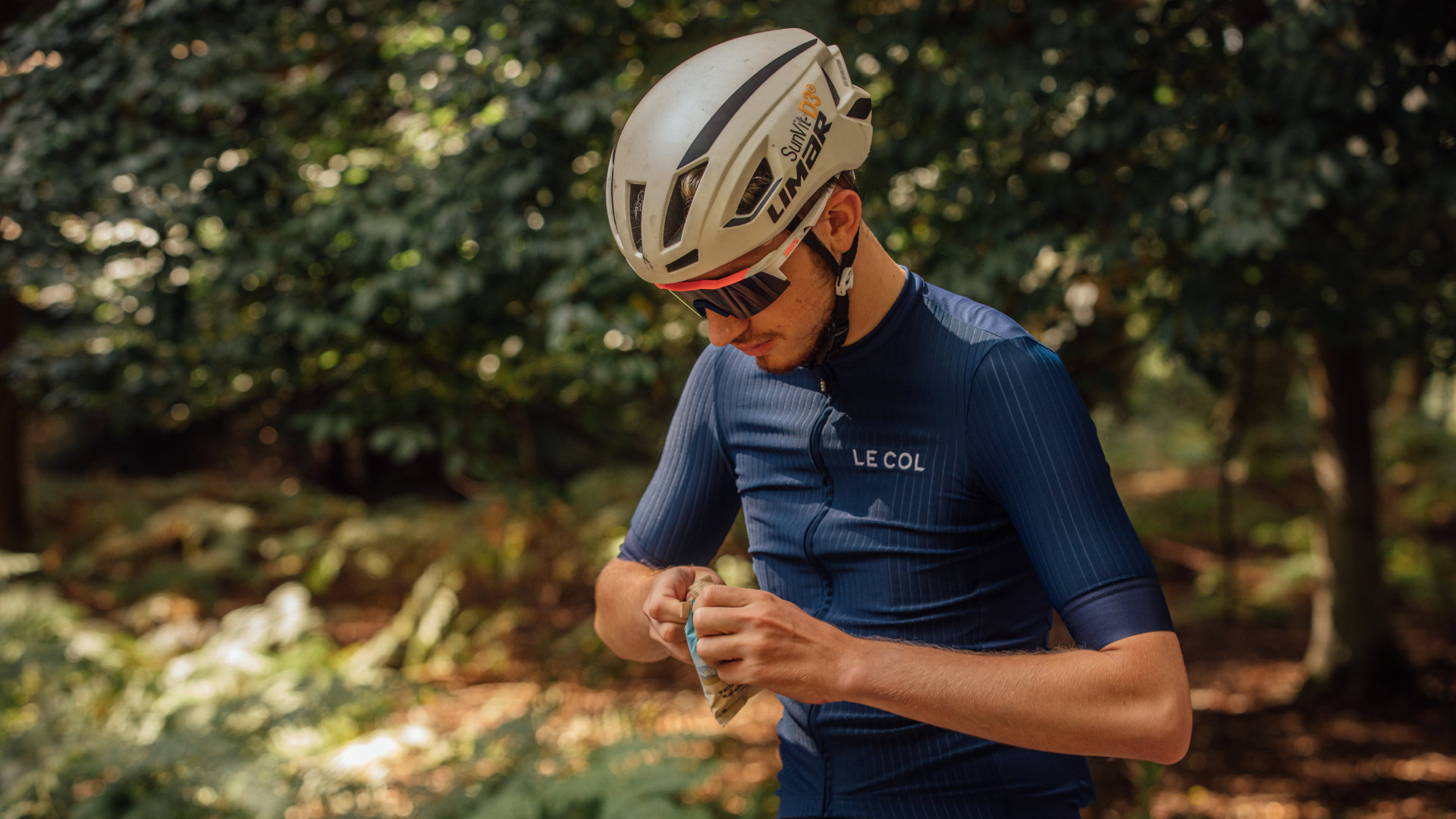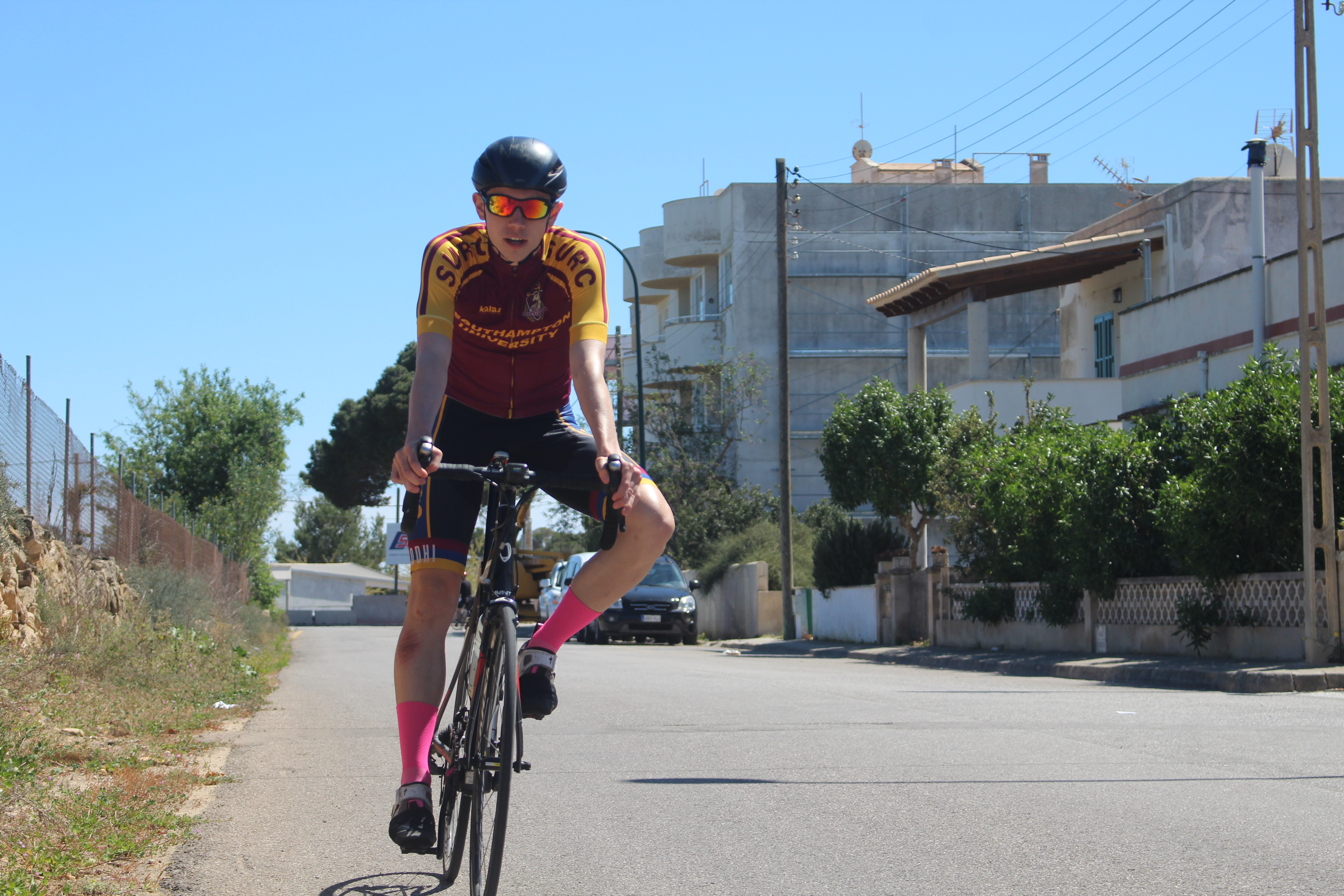Three carbohydrate nutrition strategies for cycling - and how to choose the best plan for you
As a cyclist, there are wildly different approaches you can take with your carbs - we take you through the factors to consider


When it comes to carb intake, cyclists have three main options: first, ‘fuel for the work required’ (FFTWR) – matching carb intake to the energy you intend to burn. Second, ‘low carb, high fat’ (LCHF) – eating few carbs and instead getting most of your energy from dietary fat. Finally, high-carb fuelling (HC) means feeding the body the maximum amount it can absorb while exercising vigorously – upwards of 90g per hour. The benefit of consuming plentiful carbs is obvious: you won’t run out of fuel. But why would you deliberately restrict carb intake, and is it worth the risk?
Three carbohydrate nutrition plans for cycling
Low-carb, high-fat (LCHF)

Where did the idea come from?
The idea of consuming a diet low in carbohydrate has been around for a long time. Ancient Greek Olympic athletes are believed to have consumed little carbohydrate, since they ate mostly meat. Two thousand years later, in 1958, physician Richard Mackarness published Eat Fat and Grow Slim, calling for a massive reduction in dietary carbohydrate – the first popular, modern LCHF manifesto. In endurance sport, the LCHF approach is underpinned by the knowledge that the human body, even the leanest, carries tens of thousands of calories in fat reserves. LCHF proponents argue that, rather than plying ourselves with sugar, we should train our bodies to burn some of the approximately 50,000kcal available from stored fat.
Does it promote weight loss?
In December 2020, a metaanalysis published in the National Library of Medicine concluded that a LCHF diet was effective at improving weight loss – though it has not been shown to be more effective than other forms of caloric restriction. Be aware too that most weight loss studies are conducted on relatively inactive people. For cyclists, cutting carbs is likely to impact your performance on the bike.
Does it improve fat-burning?
Yes, it’s true, eating fewer carbs makes the body better at burning fat. An extensive literature review published in 2020 concluded: “Reduction of CHO intake decreases muscle glycogen [carb stores], yielding greater fat oxidation and associated metabolic benefits.” An LCHF diet is believed to encourage the body to shift to preferencing fat as a fuel source. This occurs partly via ketosis – the liver producing ketones from fat as an alternative energy source – and partly through boosting the enzymes responsible for oxidising fat. The result is that, during low-intensity riding, a greater proportion of your energy comes from fat, thereby conserving glycogen.
The latest race content, interviews, features, reviews and expert buying guides, direct to your inbox!
If you’re training for long events such as ultra-endurance gravel riding, a LCHF diet may help you achieve your cycling goals – you’ll have more stored carbs left for high-intensity efforts during the latter stages. For riders competing in shorter, more intense races that require you to be in carb-burning zones from the gun, these effects may be less useful.
Does it have metabolic benefits?
Many studies have shown that low carbohydrate intake benefits insulin sensitivity in insulin-resistant and type-2 diabetic patients. Lower blood sugar means reduced insulin demand, lower risk of type-2 diabetes, potential for fat loss and some research even hints at inflammation reduction.
What are the downsides?
The downsides of restricting carbohydrates are that you miss out on the upsides of consuming carbohydrates. Consuming plentiful carbs while exercising has been shown, in numerous studies, to improve time to exhaustion and submaximal performance, as well as making it easier to recover. With any low-carbohydrate diet combined with endurance training, there is a significant risk of failing to meet your caloric demands, i.e. under-fuelling.
This carries an increased risk of adverse health effects such as fatigue, poor recovery, immune system suppression, injury and burnout. To meet energy demands while eating less carbohydrate, consumption of fat must be increased.
If the high-fat diet is rich in saturated fats, there is an additional risk of raising levels of LDL cholesterol and promoting inflammation, which are implicated in cardiovascular disease. These risks can be reduced by consuming healthy, unsaturated fats from plant sources, such as olive oil, avocados, and nuts.
Fuel for the work required (FFTWR)

What is it and how to do it?
A rider following FFTWR consumes low carbohydrate for easy sessions, moderate carbohydrate for moderate sessions and high carbohydrate for hard sessions. For example, a one-hour recovery ride might be done first thing in the morning before breakfast after a low carb dinner the night before. At the other extreme, a three-hour ride with threshold efforts would be done after a high-carb breakfast, thereafter consuming 100g carbs per hour during the session.
FFTWR keeps carb intake closely aligned with carb expenditure, which is useful for athletes eager to avoid overall surplus or deficit – weight can be controlled without the risk of under-fuelling.
Doesn’t this involve a lot of carb and calorie counting?
Yes, but there are nutrition apps to help – Myfitnesspal is one of the easiest to use, has a free version, and syncs with training apps such as TrainingPeaks. The Hexis app (£6.99 per month) comes with a FFTWR plan included. That said, it is possible to fuel for the work required – albeit less precisely – without keeping written records of your energy intake and expenditure. However, this relies on your being highly attuned to your body, intuiting through hunger how much energy your body requires for any given training day.
What are the benefits?
The benefits of FFTWR include some of the perks of following a low-carbohydrate diet, such as improved fat oxidation and fat loss, but without the risk of running out of carbs on long or intense sessions. In this respect, it’s the best of both worlds.
Does it improve fat oxidation?
Yes, when it’s done right. A paper published in 2018 outlining the theoretical framework underpinning FFTWR concluded that when we look at having less carbohydrates available during training ( a “train low” approach), research shows that there are stronger signals inside cells (73% of 11 studies), changes in how genes work (75% of 12 studies), and improvements in the enzymes and proteins that help with using oxygen (78% of nine studies). It’s well established that carbohydrate manipulation can increase a rider’s ability to oxidise fat but it’s worth reiterating that muscle adaptations and cell signalling are not the same as cycling performance. Bike races are primarily about power output, and it’s not necessarily the case that cell signalling and gene expression improvements convert into the ability to output more power when it matters.
What are the downsides?
FFTWR requires forward-planning and is easy to get wrong. If you train at a higher volume, mistimed or miscalculated meals can scupper the following day’s fuelling objectives. If done correctly, FFTWR carries more upside than downside but the difficulty lies in executing it properly.
Is it right for me?
FFTWR is the right strategy for any rider willing to pay enough attention to the details. If you’re a detail oriented cyclist looking to maximise your performance, FFTWR is likely to be the right approach for you.
High carbohydrate availability

What does this involve?
Of the three approaches, this is the option that requires the least discipline. The idea here is to train every session with full glycogen stores and to keep the carbs coming as you exercise. Stuffing your face, essentially. Practically, this means consuming substantial amounts of carbohydrate with practically every meal and snack, as well as upwards of 90g per hour while training.
How to consume 90g per hour on the bike?
There are two ways to increase the amount of carbohydrate one can oxidise while training. Firstly, practise consuming more, as the gut is trainable. Secondly, consume two sources of exogenous carbs (such as a combination of fructose and glucose) as this has been shown to boost oxidation rates by up to 50%.
What are the benefits?
Numerous studies have observed decreased feelings of fatigue and increased recovery speed from sessions undertaken when well fuelled. This allows athletes to train more often and potentially harder too. Secondly, training with high carbs allows athletes to tolerate higher volumes of carbs in competition, a capacity that is itself associated with improved performance.
What does the scientific literature tell us?
A meta-analysis published in the International Journal of Sport Nutrition and Exercise Metabolism in 2005 concluded that “a conclusive endorsement of a high-carbohydrate diet based on the literature is difficult to make”. Essentially, they found that the protocols differed too widely to draw firm conclusions, but time to exhaustion was increased across the board. Gut training has also been studied extensively and has shown that the ability to absorb carbohydrates is trainable.
Will it reduce my ability to oxidise fat?
It’s tricky to tell from the literature, but we know that carb availability isn’t the only factor determining the amount of fat that’s burned during exercise. Another important factor is training intensity. Training for a long time at lower intensities, irrespective of your carbohydrate consumption, can improve your ability to burn fat as a fuel.
Are all carbs equal?
No, they aren’t, but that’s not to say particular types of carbohydrates are ‘worse’ or ‘better’ for you. Upon consumption of carbohydrate-rich food, the digestive system breaks down long chain carbs into glucose, facilitating their entry into the bloodstream. The higher the Glycaemic Index (GI) of a food, the more quickly it is broken down. LowerGI foods such as whole grains, brown rice or brown pasta should be eaten the evening before a long or hard session, whereas more refined forms of carbs such as dual-source sweet drinks and energy gels, white bread or white rice are suitable immediately before or mid-session.
Is it right for me?
The scientific literature suggests that anyone looking to maximise their performance should aim to consume 90g per hour of carbohydrate on the bike.
Conclusion
Each of the above fuelling strategies has its own benefits and drawbacks, as well as its own supporters and detractors. The right approach for you depends on your training and your objectives. There’s no one-size-fits-all approach.
LCHF is a good approach for anyone seeking metabolic efficiency for long distance, lower-intensity events, while FFTWR is great for riders comfortable with counting calories in a search for optimum performance, and a high-carb diet is the safest approach for riders wanting to train hard while minimising the risk of underfuelling.
CW Tried It - ‘FFTWR worked for me’
I recently experimented with carbohydrate periodisation myself in an attempt to lose some weight, around 1.5kg, over the course of a month. As a triathlete, I train quite a lot, 18 and 25 hours per week, and usually sustain a very high carb intake during and around training. This makes it difficult to lose weight without the risk of compromising my fuelling.
I wanted to lose weight to improve my efficiency across cycling and running as I had some races approaching with significant amounts of climbing. My target weight was 75kg.
I decided to follow a simplified version of FFTWR, following just two simple rules: if tomorrow was an easy or rest day, today I’d have a low-carbohydrate dinner. Secondly, if my first session was easy (less than 90 minutes), it would be done pre-breakfast and fuelled only once 60 minutes had passed. Everything else remained the same.
The plan worked: I lost 1.5kg and it has since stayed off. I think it was effective because I didn’t sail too close to the wind; never did I allow a large calorie deficit to accrue, nor did I ignore hunger warning signals. Just as importantly, I made sure that all my high-intensity and long sessions were well-fuelled.
For me, FFTWR was a good means of getting a little leaner in a sustainable way. If I was looking to shift a more significant amount of weight, I’d do so with the assistance of a professional nutritionist.
How to avoid RED-S
We asked Scott Tindall, nutrition coach and founder of the Fuelin app, about RED-S (relative energy deficiency in sport) and how to avoid it:
CW: What is RED-S?
ST: Firstly, it is essential to define low energy availability (LEA). This is the underlying aetiology [set of causes] of RED-S syndrome. This can be an acute or temporary state whereby the caloric intake is not matched with energy expenditure through exercise and daily living. It is when LEA becomes continuous and chronic that physiological impairment occurs.
CW: How does LEA occur?
ST: LEA can be an intentional caloric restriction for weight loss or through disordered eating. It can also be unintentional through misguided nutrition planning or avoidance of certain foods. It affects men as well as women.
CW: How does RED-S impact athletes?
ST: RED-S has a multi-factorial impact on the human body. Traditionally the ‘triad’ focused on menstrual dysfunction, low-calorie intake and bone health. It is now recognised that RED-S affects both sexes, with impacts on reproductive system, immunity, bone health, hormones, metabolism, blood, growth and development, psychology, the cardiovascular and digestive system.
CW: How can it be diagnosed and treated?
ST: Unintentional underfuelling may result from poor planning of cycling nutrition. If caused by intentional underfuelling, more questions must be answered. Was the intention just to lose weight? Were signs and symptoms ignored for too long? Is there a more pressing underlying psychological issue related to body dysmorphia and disordered eating? How long has this been occurring? When did it start? With the assistance of a specialist medical practitioner, these questions must be addressed promptly and compassionately.
The first version of this article was published in the print edition of Cycling Weekly. Subscribe online and get the magazine delivered direct to your door every week.

Tom Epton is a freelance writer and data scientist. Originally training as a scientist after completing his studies in physics he realised that cycling was what he wanted to spend his life thinking about. Now he works with manufacturers, athletes and teams using cutting edge data science methods to find performance gains. Tom writes primarily about sport-science and tech!